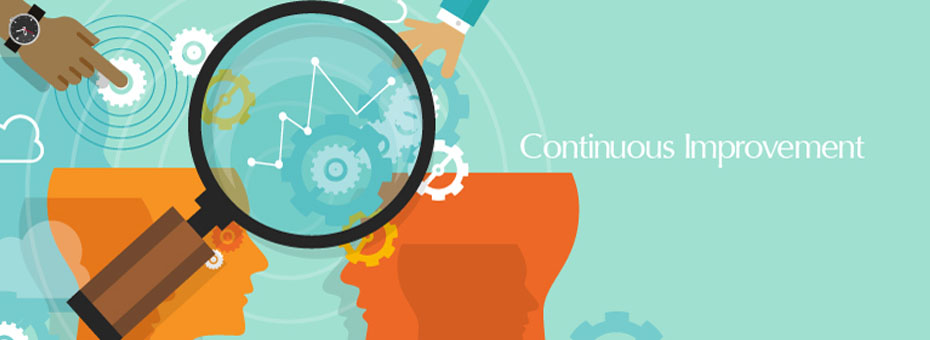Continuous improvement professionals, managers, and executives from the U.S. and Canada presented at the recent Canadian Lean Conference, which drew about 1,000 business leaders to the RBC Convention Centre in Winnipeg. They shared lessons and results from company lean transformation efforts as well as some personal journeys. Here’s a summary of some of the stories I heard.
Ugly Babies
Early in his career, Billy Taylor was transferred (reluctantly) to help a plant known for poor quality and low productivity. During an initial walk through the facility with the union rep, he asked, “About how many people work here?”
“Want the truth?” the rep said, spitting on the floor.
“Yes.”
“About half.”
Traditionally, according to Taylor, who is now Goodyear’s North America director of commercial and off-highway manufacturing, 5% of people in a company make something happen, 15% watch something happen, and 80% wait for something to happen.
“That’s why companies fail,” he said.
To help this plant avoid failure – a real possibility since it was missing its daily production target by 7,000 tires — Taylor began meeting twice daily with groups of 25 people at a time to understand the “hidden factory” of problems. No questions or suggestions were off limits.
“On my team, you have to talk about the ugly babies,” Taylor said.
A strikingly ugly baby, alluded to by the union rep, was associates’ lack of engagement. So as one of his first actions, Taylor created a large status board with red and green – no yellow – magnetic markers showing the condition of safety, quality, reliability, cost, and other key measures for every major process. Employees updated the board every two hours. He also bought everyone t-shirts bearing the number “38” for the plant’s production target of 38,000 tires daily.
“Everyone now knew what winning was,” Taylor said. “They weren’t running machines anymore they were running a business.” In six months, plant production jumped from 31,000 tires per day to the targeted 38,000.
Silent Enemy
As he listened on the shop floor to an improvement team reporting on a kaizen project, Lantech CEO Jim Lancaster suddenly had a sinking feeling.
“I’ve heard this before,” he thought. “I’ve heard this problem before. In fact, I heard a team report about fixing the same problem with the same solution four years ago.” As Lancaster walked upstairs to his office, he wondered why lean improvements fell apart.
Since the mid-1990s, Lantech had been the “kings of kaizen.” As one of the first companies to truly embrace lean management principles, improvement teams rapidly transformed manufacturing and office processes. They created one-piece flow production cells, stopped batch processing, improved quality, accelerated production velocity, slashed the time for entering orders and closing the books, and freed millions of dollars in inventory. But unless Lantech could prevent improvements from disappearing, its growth and profitability were at risk.
The problem, as Lancaster ultimately realized, was that every manufacturing or service process deteriorated. Inevitably, variables degraded processes over time – tools got dull, product designs changed, a vendor’s part tolerances shifted, a new employee wasn’t fully trained, etc. He told attendees that process deterioration was the “silent enemy” of their continuous improvement efforts.
The solution, established after months of experimenting, was a plantwide daily management system that caught and corrected any deterioration immediately. The system, described in Lancaster’s book the Work of Management, has teams of executives and managers at every level walking overlapping routes every morning through every production and office area, stopping at visual management boards to check a few critical indicators with area associates. If indicators showed any deterioration in performance, the leaders helped associates take corrective action immediately.
“There will be 10, 20, 30 decisions every morning made cross-functionally,” Lancaster said. As a result of the new daily management system, “we’ve accelerated our lean improvements and the bottom line results from them.”
YouTube Yokoten
A lean management transformation that began in 2004 transformed most processes at custom door and window maker Loewen but skipped most people. A company survey showed that roughly 80% of the workforce had negative views about work, according to Alex Boxhorn, logistics manager.
“We focused on waste elimination, but very little on changing attitudes or behaviors,” he said. “That started to bother me.” In an informal survey one Friday afternoon, he asked people in his area if they were having any process problems. Everyone gave him five or six activities that needed improvement.
Boxhorn facilitated discussions with his team about implementing the improvements and how to change the work culture. The result was a written list of expected behaviors, written side-by-side, that managers and team members were supposed to do in several key areas. For instance, under “tasks” leaders were obliged to “sustain the morning meeting” and “perform gemba walks.” The expectations and focus for the team were to attend “daily meetings/huddles” and “facilitate standup meetings.”
Responsibility for facilitating the daily meeting rotated among team members, an idea Boxhorn got from Two Second Lean by Paul Akers. Team members report that it has given them confidence, a deeper understanding of the business, and a greater willingness to share ideas, as they explain in this video.
The culture-change effort emphasized implementing rapid improvements, so the company gives people 30 minutes daily for continuous improvement from either 7 to 7:30 a.m. or 7:30 to 8 a.m. Loewen encourages members to record and post videos of their improvements to the Loewen Lean channel on YouTube.
Building the lean culture now starts before new hires begin work. They get up to 80 hours of training in lean tools and behaviors, including how to make and post those improvement videos.
“When you train people up front, it gets them in the right mindset,” Boxhorn said.
Industry 4.0 Looms
Toyota Group founder Sakichi Toyoda was a prolific inventor of machines and devices for spinning and weaving, including in the early 1900s a self-monitoring mechanism that stopped a loom if a thread broke. This innovation allowed one operator to tend multiple machines and led to the concept of jidoka, which means “automation with human intelligence.” It became, along with just-in-time, a pillar of the Toyota Production System.
But these are not the most important things he did, according to Real (Ray) Tanguay, former president and chairman of Toyota Motor Manufacturing Canada.
“He left us a culture, the most important thing he left behind,” Tanguay told the audience in a presentation that examined the company’s past and possible future. That culture was built on five principles attributed to Toyoda:
- Always be faithful to your duties, thereby contributing to the company and to the overall good.
- Always be studious and creative, striving to stay ahead of the times.
- Always be practical and avoid frivolousness.
- Always strive to build a homelike atmosphere at work that is warm and friendly.
- Always have respect for spiritual matters and remember to be grateful at all times.
Looking ahead at technology shifts, Tanguay said lean management was the “foundation” for Industry 4.0, the use of digital technologies to make factories more flexible and responsive to customers. Without lean principles, the “smart factory” will just “automate garbage processes.”
Retrain Brains
Engineer and researcher Mike Rother compared the scientific way of thinking about solving problems to the difference in navigating with a map versus a compass.
“If you navigate with a map you’ve decided how you’re going to get where you’re going. Whereas if you navigate with a compass, you know where you want to go, but you have no idea exactly how you’re going to get there. You’re going to figure that out along the way. Scientific thinking is like that. It’s like navigating with a compass.”
He defined scientific thinking as “a routine of intentional coordination between what we predict will happen next, seeing what actually happens, and adjusting based on what we learn from the difference.”
The problem is that scientific thinking is not our default way of thinking. Our brain tends to make assumptions based on what information available. This is a faster way of making decisions, an evolutionary advantage for early humans when quick reaction was often a better survival tactic than taking time to deeply understand a difficulty before acting. The problem for managers today is that our brain’s default assumption mechanism predisposes us to jump to solutions.
Fortunately, we can retrain our brains for scientific thinking, noted Rother. He explained how to do this through the ‘improvement kata,” a repeating four-step routine that makes continuous improvement through scientific thinking a daily habit. (A kata is a training exercise in Japanese martial arts.) The steps are:
- Determine the direction or challenge
- Grasp current conditions
- Establish the next target condition or goal
- Conduct experiments to get there.
Rother, author of Toyota Kata, Toyota Kata Culture, and Toyota Kata Practice Guide, said the improvement kata was not a problem-solving method but a behavior modification process that makes people better problem solvers. “It supports current problem-solving methods, it doesn’t replace them.” He described improvement kata as a way of experimenting towards a goal.
Developing employees by teaching them scientific thinking, which is the key to making lean tools and the overall management system work, is the job of managers and a sharp break with their traditional roles. “It’s not being the problem solver. It’s not just making the numbers. It’s developing people who then make the numbers.”






